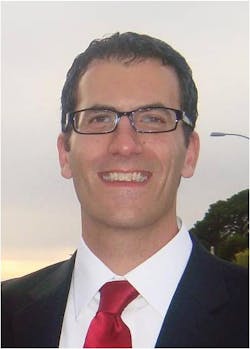Christopher Yake
In 10 short years since receiving his master's degree in land use and transportation planning from the University of North Carolina, Christopher Yake has quickly become a national leader in the transit-oriented development (TOD) movement, working from coast to coast with cities, regions and transit agencies of all sizes and modes. From long-range visioning to actual vertical development, and in all types of markets, from new to mature transit systems and disadvantaged to affluent communities, Yake has been involved in all types of projects.
Yake has had the opportunity to work in both the public and private sectors with an intentional emphasis on integrated transit and land-use planning. As an urban economist with Basile Baumann Prost & Associates, he served a number of clients, including local governments and transit agencies, to capture the full land-use potential of transportation investments. In addition to specializing in TOD market analysis, he worked on New Starts applications by developing innovative TOD overlay zoning, joint development guidelines and progressive parking policies. As a senior planner with the city of Denver, he was a key member of the city's TOD Initiative responding to planned TREX and FasTracks rail corridors.
Since relocating to Portland, he managed the Eastside MAX Station Communities Project, seeking to enhance TriMet's Blue Line station areas 20 years after their opening. Most recently, as project manager for Portland Metro's TOD Program Strategic Plan, he led the development of an innovative approach and methodology for evaluating TOD potential that has garnered national attention, inspiring regions and federal agencies to build similar typologies. His day-to-day duties with Metro included joint development projects with local developers and providing TOD expertise for local jurisdictions.
Outside of his assigned roles, he served as Metro's representative on the Rail~Volution National Steering Committee and as a panelist on the Transit Cooperative Research Program's (TCRP) Project H-45, Rail Transit Corridor Analysis: Planning and Retrofitting for Livable Communities.
Yake's recent move to Reconnecting America as a project director reflects the level of technical expertise in TOD he has gained over the years. In this role, he will be in position to share his knowledge of transit and land use with cities and regions across the country.
Best Part of the Job
"Seeing projects, whether they are transit or TOD, actually get built [is the best part of what I do]. There is nothing more gratifying than seeing my planning efforts lead to real-life urbanism. For that reason, I have intentionally gravitated toward the implementation and project development end of the spectrum over the course of my transportation and land-use career.
"Perhaps my most formative experience came as child when we moved from a close-in historic streetcar neighborhood to the suburbs. Prior to the move, my sisters and I had full access to our neighborhood on foot and bike and the city via our bus passes. After we moved, we were isolated and far less active. It was not until I first visited Chicago years later that I would recognize again the liberating potential of transit and mixed-use neighborhoods. From that point on, I was determined to foster communities where no child or adult would be limited by their transportation options."
Evolving Potential
"It is an exciting time to be a young professional in the field. Not only are cities and regions across the country continuing to build new transit lines and networks, we are also seeing the original light rail systems built in the 80s and 90s mature. In addition to promoting future expansions, I would like to see jurisdictions and agencies revisit their “legacy” corridors and seek out ways to optimize and improve them. So many cities have such great potential to promote urban revitalization and infill around their existing transit and neighborhood assets."
